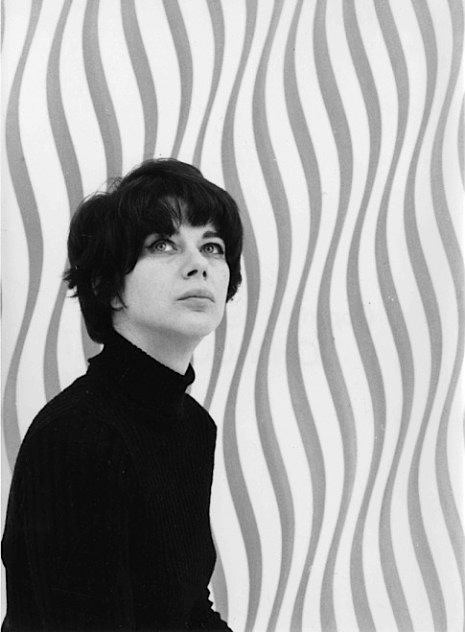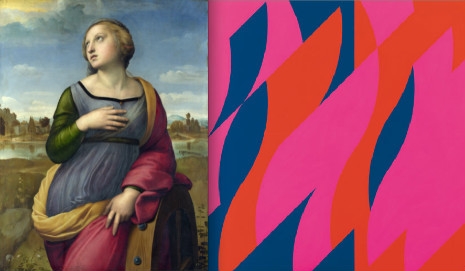
Bridget Riley did not like her paintings being labeled as Op Art, as they were not some kind of visual trick, but the artist’s response to the pure visual beauty of life.
“Looking is a pleasure, a continual surprise that might seem too trivial an aim, but pleasure is at one end of a scale that runs up to joy.
Sight, the activity of looking, helps us to be more truthfully aware of the condition of being alive.”
When Riley curated an exhibition of her work at the National Gallery, London in 2010, she surprised critics by juxtaposing her paintings with classical works of art by Jan Van Eyck (Portrait of a Man 1433), Mantegna (Introduction of the Cult of Cybele to Rome 1505-6), Raphael (Saint Catherine of Alexanderia 1507) and three studies by Seurat.

Raphael’s ‘Saint Catherine’ (1507) with a detail from Riley’s ‘Red With Red’ (2007)
Riley was revealing her source materials from which she had abstracted elements of color, movement, pattern and shape to create her own paintings such as Arrest 3 (1965) or Red With Red (2007).
Riley’s paintings create what she terms as an “activity” that comes out at the viewer, an experience that is suspended between the viewer and the canvas.
Her first awareness of this visual experience came when she was a child swimming off the coast of Cornwall, where “a glitter of bright sunlight and its tiny pinpoints of virtually black shadow” made her feel as though she was “swimming through a diamond.”
In this documentary by David Thompson, made for the Arts Council in 1979, Riley recalled another equally memorable experience.
“I remember one very hot summer, it was in the south of France, and I was climbing a hillside of broken shale, and the light was so strong that it dazzled. It seemed to come at me from all directions—it was beating down form above and beating back into my eyes at the same time. One lost all sense of focus, everything seemed to disintegrate in light, the landscape dissolved, it was like standing in a field of pure energy.”
Bonus: Andrew Graham-Dixon on Bridget Riley at the National Gallery, London.